GES039 - St. Pancras Hotel
I'd been here before as part of the OpenHouse weekend with an ex. many years ago, but fell in love with architectural awesomeness, as some posh art critic might say. While surfing through Downfallen's pictures, I spotted it again, and it played on my mind. A trip up to see the brilliant Nottingham Forest (they beat Leicester 5-1) meant leaving from St. Pancras. While there I did a quick reccie, and thought I had a way in.
Cue a few weeks later, and Speed and I had set up a weekend of explores. This was to be the first place we checked out.

In May 1865, (while the station was still being constructed), the Midland Railway Company launched a competition for the design of a 150 bed hotel, with eleven architects asked to submit their entries. One of the architects, Sir George Gilbert Scott (1811-1878), got completely carried away and submitted a grand plan bigger and far more expensive that the original specification. It won, although the plans were cut back to make it cost effective.
The Midland Grand opened in 1876 and soon acquired an excellent reputation as an upmarket, 300-room hotel, charging 14 shillings (70p) a night in 1879 - only six pence (2.5p) more than the luxurious and famed Langham in Portland Place, W1.
The Midland Grand was taken over by the London, Midland and Scottish Railway in 1922, before closing in 1935 - its facilities were outdated and it had become too expensive to run and refurbish. Now renamed St Pancras Chambers, the premises settled down to a somewhat less glamorous existence as railway offices until 1980 when it was abandoned due to a failed fire certificate. With the arrival of the Eurostar terminus, the building's fortunes were revived. It's being converted into a 5* Marriott hotel with 244 bedrooms
We arrived late in the evening, and as we approached my initial entry point, it was clear this wasn't going to happen. We looked around for another access point, but no joy and Speed spotting a dome cam carefully hidden amongst the scaffold. I had seen a possible way in, and Speed went off to reccie it. However there were people in a nearby garage. We went for a wander and returned, as Speed shot in, It became clear this was a go-er.
We crawled for a fair way in a crawl space, ducking and diving, and somehow Speed managed to relieve himself while bent double. Realising we were probably alone, we became more brazen. Although Speed pointed out some sort of possible alarm detector thingy, so danger was always there.
We walked into the building and climbed the stairs, here and there sections were blocked off with scaffold poles. On the stairway were mini scaffold sets for people to paint the ceilings. A bit of a bugger to squeeze by. We got as high as we could go, Speed nipping out onto the roof for a brief look around, but it was a no go. He was very keen to get to the clock tower, but would leave frustrated. As would I, the pictures i'd seen from the tower were just brilliant.
We descended through the mostly gutted building, until we reached the top of the grand staircase, the centre piece of the building. I was determined to go up, and set off to climb around the myriad of short ladders and scaffolded sections. It was hidden by some boarding, the lovely arches that surround it sticking over the top.

I was disappointed I could photograph the staircase in it's natural form. But climbing the scaffold meant I could get close up to the crest at the pinnacle of the ceiling.

There were also paintings of knights and other medieval imagery around the top section of the staircase ceiling.


It was amazing, I sat quietly for a minute to try to take it all in, and how lucky I was to be seeing all this up close. I then got out of the way, as I leant Speed my fisheye for a play. Annoyingly he got better photos out of it.
This was underneath all the scaffold going up to the staircase ceiling.
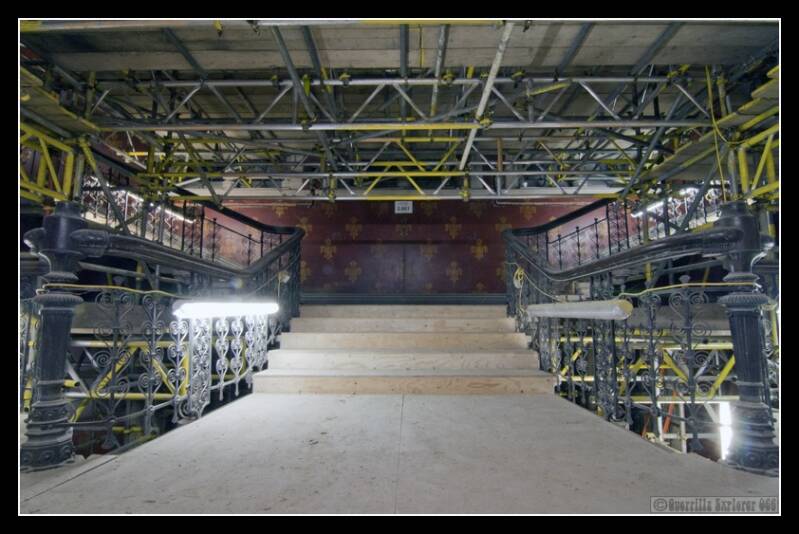
We descended down the staircase, and came to what I think was the first floor. A long corridor that went form the West wing right around to the East wing. It was the most hotel like bit of the building.

Speed was frustrated by the entrances to the penthouses and clock tower being boarded up and clearly alarmed. Before the work began, a rich chap bought one of the penthouses, so this was presumably part of his security. A map on a board laid out the hotel.
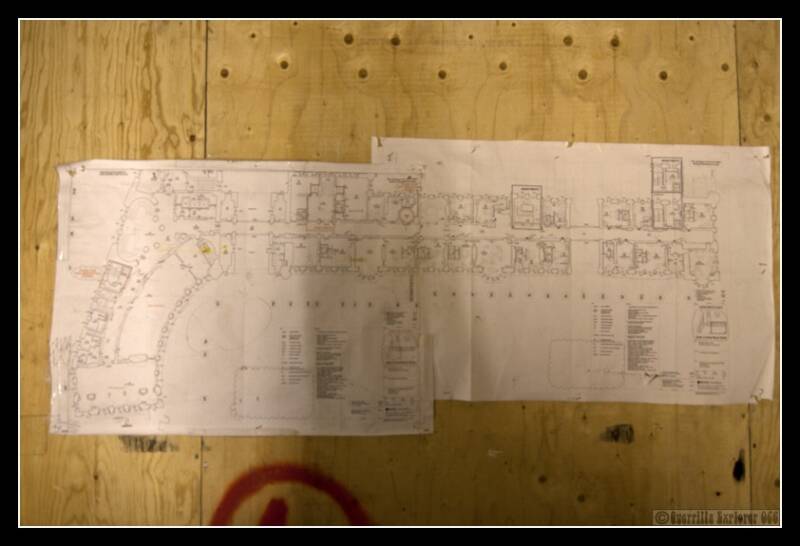
Even the servants back stairs were imposing.
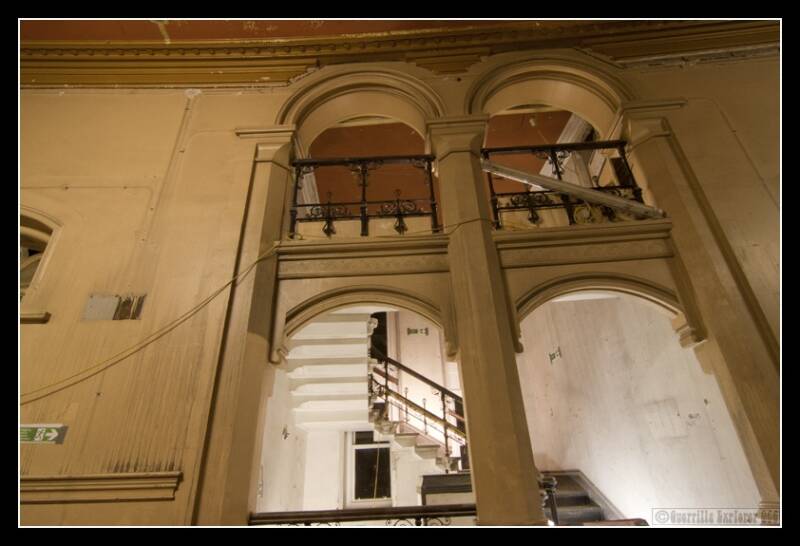
All along the floors were the attractive mosaics lining the hall.

And the walls that sat above them were protected by plastic barriers.

Most of the hotel rooms were stripped and empty. While peering through the plastic covered windows, we were greeted with the site of a Eurostar train on the St. Pancras Station concourse.
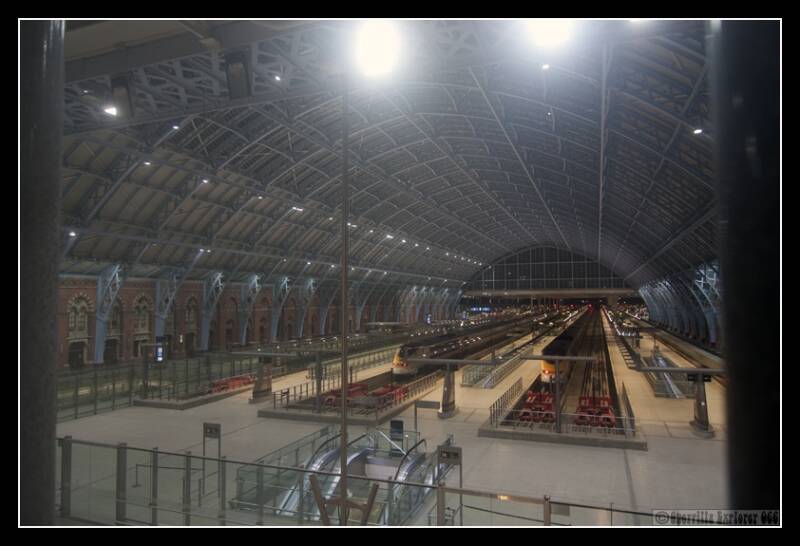
We then walked out to the balcony that makes up the centre of the hotel in the middle of the front of the building. We were quite visible here to joe public, and set about climbing the scaffold. Speed went first and after a couple of layers, came back down. He'd seen the a guy in one of the finished flats walking about and decided it to risky. I got a few photos of the outside of the hotel's fascia.
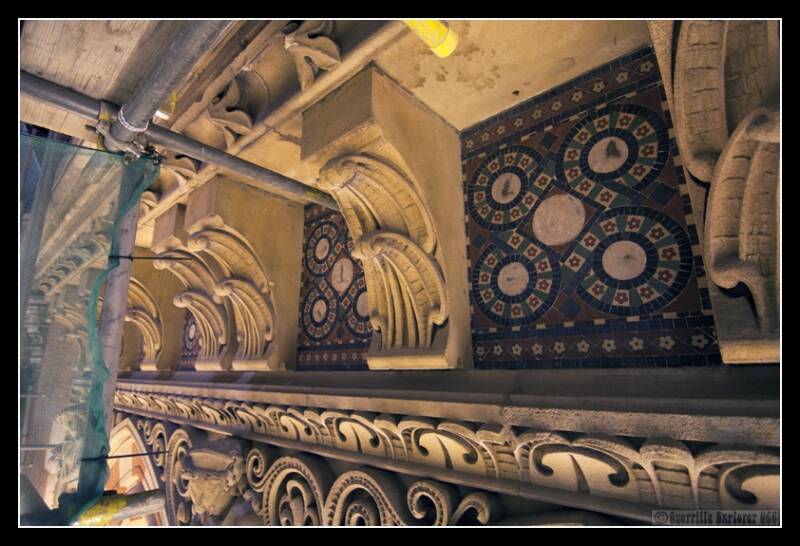
And a figure poking out.
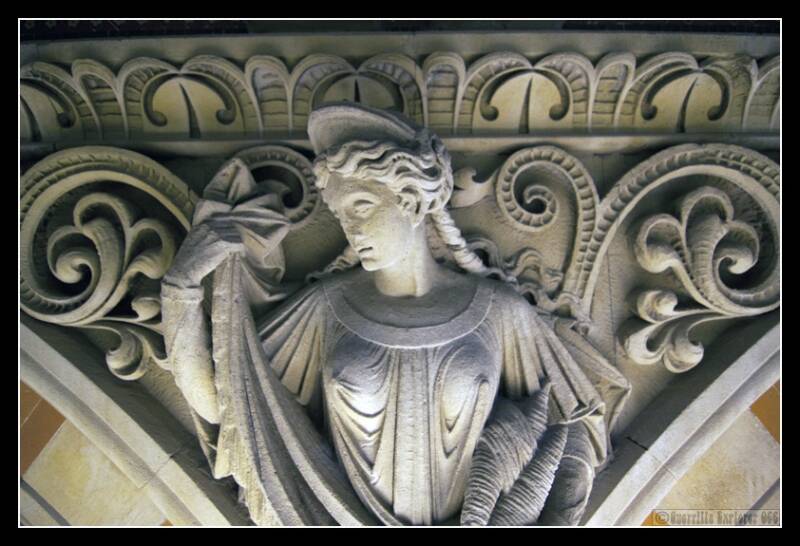
And after a wander around the ground floor, which had little of interest, it was back out the way we came. Off to find somewhere a little bit higher, namely the Strata tower.
Add comment
Comments